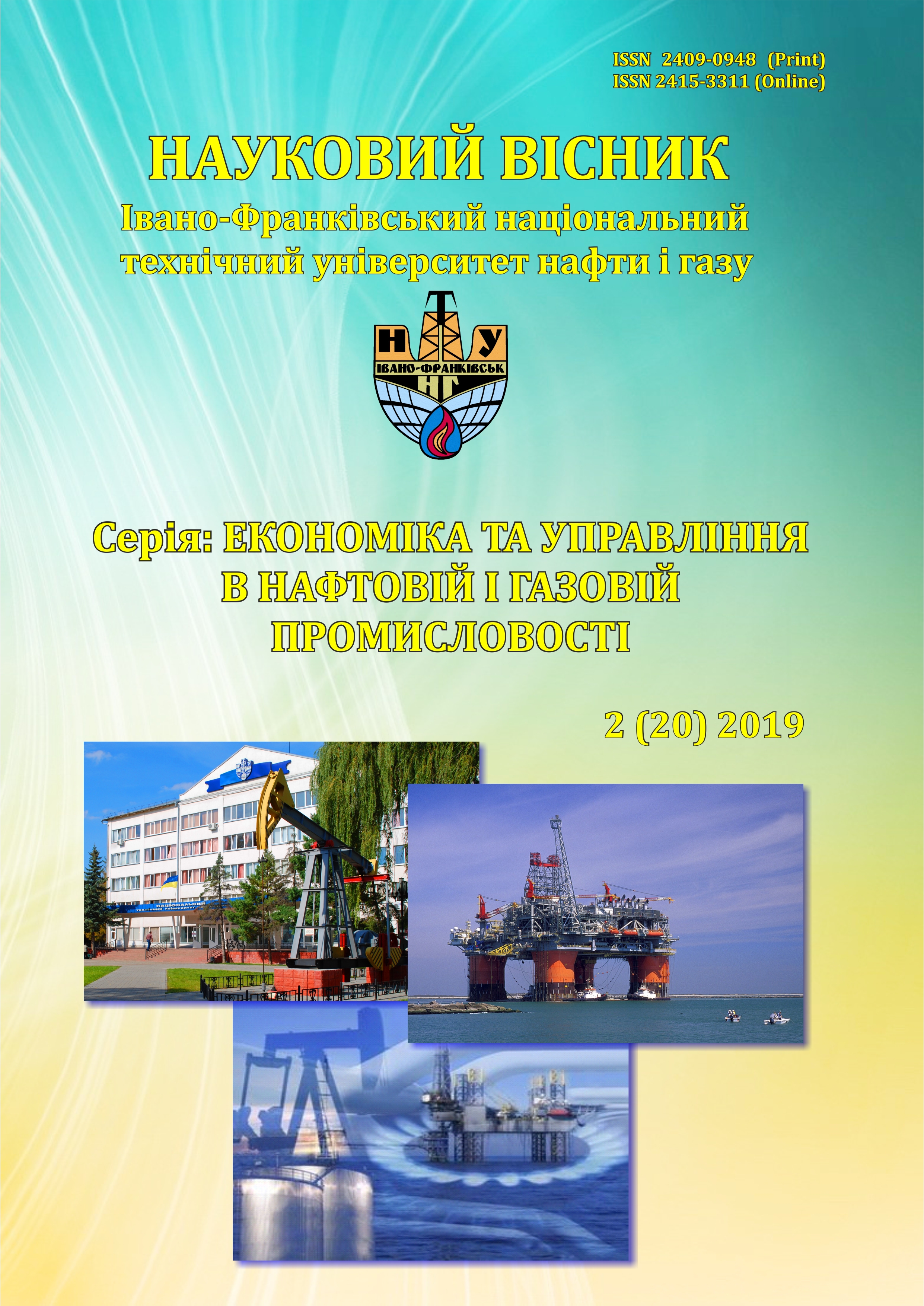THE ESSENCE OF THE INDUSTRY COMPETITIVENESS IN THE COMPETITIVE RELATIONS SYSTEM
DOI:
https://doi.org/10.31471/2409-0948-2019-2(20)-210-217Keywords:
competition, competitiveness, industry competitiveness, competitive relations, transformation.Abstract
The article is devoted to the research of the essence of industry competitiveness in the system of competitive relations. The purpose of the article is to determine the main essence of industry competitiveness in the system of competitive relations. It is determined that as a result of changes in the economic environment for the effective existence of the national economy, incl. development of industries, using market mechanisms to influence the organization of business entities in commodity markets. The importance of the industry's competitiveness in the system of competitive relations and the formation of a market economy to which the competitive environment belongs, is crucial. The question of the essence of industry competitiveness in the system of competitive relations is quite complex and multifaceted in its decision.
The study of the topic of competitiveness by various scientists is analyzed, and it is noted that, despite the large number of scientific works on competitiveness issues, there are insufficiently studied studies in the context of the essence of industry competitiveness in the system of competitive relations. Therefore, it is important to identify the main aspects of the industry's competitiveness in a system of competitive relations. The essence of the concept of "competition" is considered. Understanding of the concept of "competitiveness" is investigated. Consider the causes of the unstable situation of industries, but also. enterprises in the market that are associated with a weak ability to achieve goals in a competitive market.
Competitiveness, as a complex economic category, is considered from the standpoint of economic competition for the consumer and the necessary resources. The table shows the system of the main objects of competitiveness research, which is also considered from the side of the competitiveness of the economy and production sector, on the basis of which for all economic objects (products, enterprises, industries) it is possible to interpret their competitiveness in competition with consumers and markets. It is noted that the competitiveness assessment of an enterprise begins with the analysis of competition in the industry as a whole. The interpretation of the concept of "industry competitiveness" is defined. It is determined that the competitiveness of the industry allows for the presence of competitive advantages over similar industries abroad. The main factors influencing the competitiveness of the industry, which form the opportunities for further development of the industry.
The conditions for ensuring the competitiveness of the industry have been determined. The concept of "competitive relations" is based on the relations between economic entities, economic rivalry and the struggle for the most favorable conditions of production and sale of goods. The signs of competitive relations are indicated. It is stated that competitive relations are one of the types of economic relations between specific economic entities that arise in connection with the production and exchange of tangible goods (goods, services) within a specific market competitive environment.
The directions of competitive relations that include globalization processes of transformation are outlined. It is noted that competitive relations in view of competitive forces imply widespread competition with the participation of suppliers, consumers, substitutes and potential participants.
References
Sidorenko, E.V, Goncharov, Y.V., Methods for assessing the competitiveness of products in industry, Kiev National University of Technology and Design: Аvailable at: https://er.knutd.edu.ua/bitstream/123456789/7786/1/NRMSE2017_V3_P099-100.pdf
Maslyaeva, O.O. (2011). Economic essence of the category "competitiveness": definition and systematization: E-journal "Effective Economy" № 10, 2011. Аvailable at: http://www.economy.nayka.com.ua/?op=1&z=737
Kryvovyazyuk, I.V. (2017). Economic diagnostics. 2 nd species: study. tool. / I.V. Kryvovyazyuk. - K .: Center for Educational Literature. 456 p.
Dolzhansky I. 3., Zagorna, T.O. (2006) Competitiveness of the enterprise: Textbook. - Kyiv: Center for Educational Literature. 384 p.
Mikhalchishin, N.L. (2008). Competitive Relations in a Transitional and Market Economy. Аvailable at: http://ena.lp.edu.ua/bitstream/ntb/1675/1/59.pdf
Mitsik, O.O. (2008). Development of competitive relations in the transformation economy of Ukraine: abstract. dissertation ... Cand. econom. Sciences / OO. Mitzic; The state. higher. teach. closed "Kyiv National Economic University named after V. Hetman". - K. 24 p.
Savchenko, I.A. (2013). Contemporary Approaches to the Economic Essence of Competitive Relations: Electronic Journal "Effective Economy" № 2. Аvailable at: http://www.economy.nayka.com.ua/?op=1&z=1785
Porter, E. (2005). Competitive strategy: Methods of analysis of industries and competitors / Per. with English. - M.: Alpina Business Bux. 454 p.
Andrusiv U. Ya. (2019). Metody otsinky konkurentospromozhnosti promyslovykh pidpryiemstv u natsionalnii ekonomitsi. «Biznes Inform». №3. C. 241-246. https://doi.org/10.32983/2222-4459-2019-3-241-246 [in Ukrainian].
Dovgal, O. V., Kravchenko, M. V., Demchuk, N. I., Odnoshevnaya, O. A., Novikov, O. Y., Andrusiv, U. Y., Popadynets, I. R. (2017). Methods of competitiveness assessment of agricultural enterprise in eastern europe. Regional Science Inquiry, 9(2), 231-242.
Downloads
Published
How to Cite
Issue
Section
License
Copyright and Licensing Terms
Copyright Statement
The authors who publish in the journal accept the following conditions:
- The authors retain the copyright and grant the journal the right of first publication, licensed with Creative CommonsCC BY-NC-SA , which permits other people to remix, transform, and build upon the material and use the material for non-commercial purposes, give appropriate credit and distribute the contributions under the same license as the original.
- The authors can conclude additional agreements on the non-exclusive distribution of the journal’s published version of the work (for example, publication of the work in electronic repositories) with an acknowledgment of its initial publication in this journal.
- The authors can upload the published articles on the Internet (for example, in electronic repositories or on web-sites), as it will stimulate fruitful scholarly discussions and increase the citation rates of the published articles.


1.png)


1.png)





